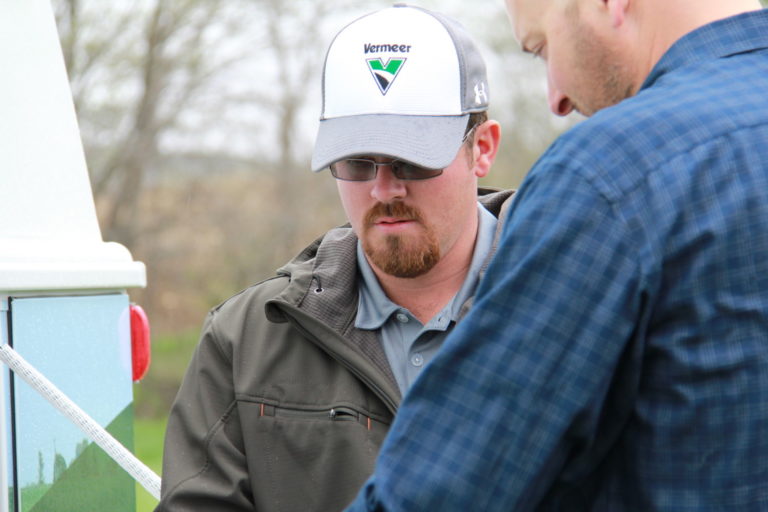
5 Tips for Hiring Farm Workers
March 2022
Farm labor shortages are nothing new, but finding and keeping labor is harder now than ever before. According to the U.S. Bureau of Labor Statistics Employment, the number of agricultural workers is expected to increase just 1% from 2019 to 2029. This growth is slower than the average for all occupations. So how do you find the right workers for the job? What should you look for in your candidates? We talked to Iowa farmer Robert Hoelscher to get his take on the labor situation and to see if he had any tips for hiring farm workers.
In a top cattle- and corn-producing state, Hoelscher grows over 2,200 acres (890 ha) of corn and soybeans. In 2016, about the time Hoelscher started taking over the labor portion of the business from his father, his full-time employee Trevor Chaplin left the farm to work for a corporate processing plant. With a growing family, Chaplin needed more. “I was at the point in my life where I needed benefits. That’s what drove me to find something different,” he said.
The labor shortage through the eyes of a farmer
After Chaplin left, Hoelscher struggled for five years to replace him. “In five years, I’d hired four full-timers and six part-timers. None of them made it past more than one harvest. Some quit mid-harvest or mid-planting and really left me in a bind,” Hoelscher said.
He said a couple of them left because they’d moved on to the next stage of life — one retired, one graduated from college and moved out of state. But others just weren’t cut out for the job. Hoelscher said he struggled with generational clashes between his father’s work styles and the work styles of younger employees. “I was spending too much precious time as a middleman between my dad and some of the younger guys. My dad started this operation in the 1960s and so much has changed since then. Not just the equipment, but people’s attitudes and their work ethic”
Where to look for farm workers
When looking for the right employees, Hoelscher tried posting on Craigslist, Indeed and on the FarmHand app. He also contacted local community colleges to find students looking for work and relied on word-of-mouth recommendations. In his experience, Hoelscher had the best luck working with community colleges and finding people through word of mouth.
He even tried to recruit Chaplin back. That required selling his dad on the need for offering better benefits and pay, something that has vastly changed over the years. His first attempt failed because they couldn’t offer the benefits Chaplin needed for his young children.
However, as time passed, Chaplin realized he missed the farm work and discovered his corporate job wasn’t nearly as flexible as he’d hoped it would be. “Farming lets you see what you have accomplished. I like being able to see my progress, whether it’s work out in the fields or filling and unloading grain bins. I missed that,” Chaplin said. “I reached back out to Robert and he was able to offer me the benefits I need and a more flexible schedule when we’re not planting or harvesting.”
Hoelscher counts himself lucky to have Chaplin back on the farm. “It’s such a relief to have someone here who knows what he’s doing and is such a self-starter. We get so much more done in a day when we work in tandem.” He’s also grateful that, with advances in technology and machinery, the farm can get by with only him and one full-time worker. “It wasn’t that long ago that my dad needed five full-timers and two part-timers with three combines running 24/7 during harvest. Now we can farm more ground with less than half the manpower. I don’t know what we’d do if that wasn’t the case today,” Hoelscher said.
5 tips for hiring farm workers
Through his experiences in finding and hiring farm workers, Hoelscher has a few tips to share.
- Know what pay and benefits are being offered in your area so you can be competitive.
- Be willing to teach the right person. (Chaplin, for example, came to the farm with no experience.)
- Trust your gut when you have a good rapport with someone.
- Hire before you need people. For example, aim to hire fall harvest employees by July.
- Try to advertise your openings in as many ways as possible.
Hoelscher’s tips could be a good place for you to start as you look into hiring farm workers, but you should always check with your lawyer if you have specific hiring-practice questions.
